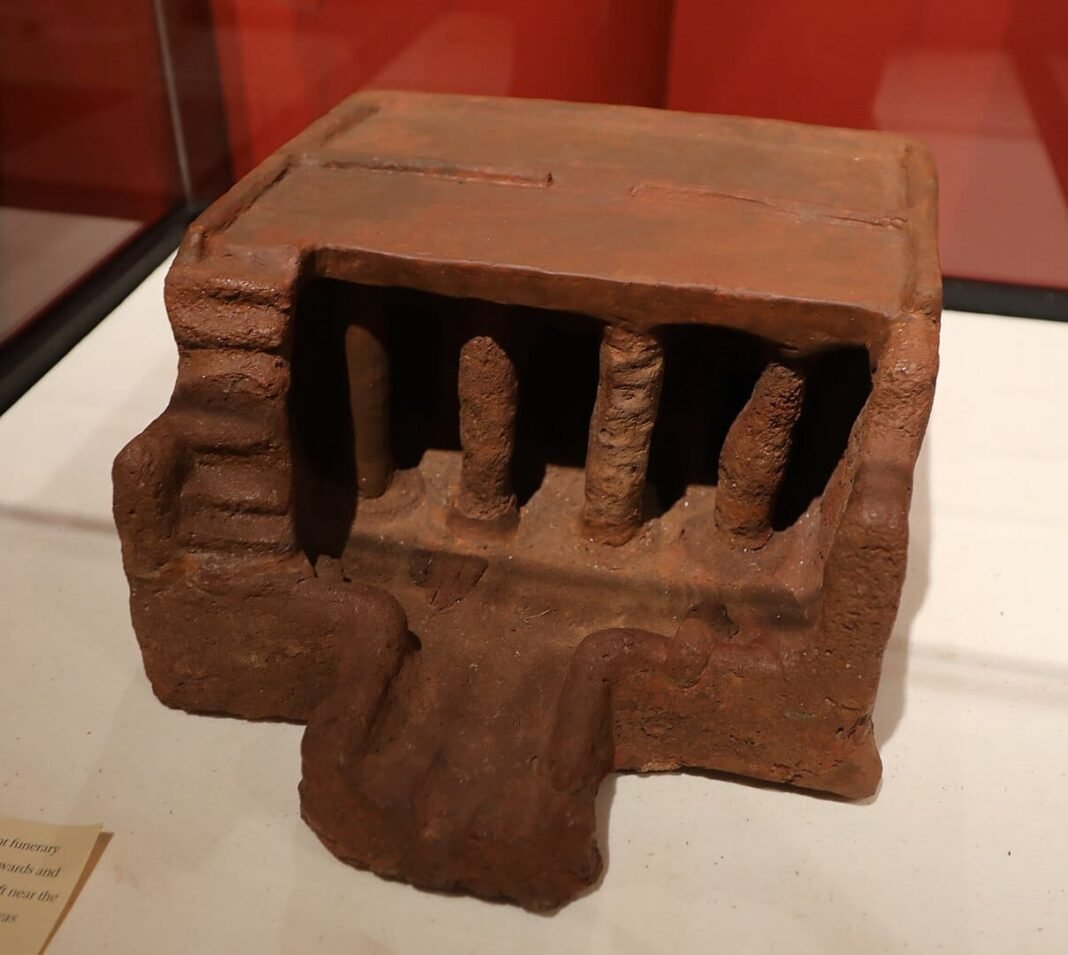
Researchers at the Fitzwilliam Museum in Cambridge have identified a 4,000-year-old handprint on the underside of an ancient Egyptian clay burial model. The rare imprint was spotted on a miniature “soul house,” originally excavated in Egypt and dating to the Middle Kingdom.
The model shows the craftsmanship of ancient artisans
The model, dated between 2055 and 1650 BCE, depicts a two-story building supported by columns. Researchers determined that the potter constructed the form using wooden sticks coated with clay. During firing, the wooden frame burned away, leaving hollow spaces within the structure. The staircases were created by pinching the wet clay by hand.
Handprint described as a rare find
Helen Strudwick, senior Egyptologist at the Fitzwilliam Museum, called the handprint “rare and exciting.” She explained that she had never seen such a complete impression on an Egyptian artifact. Strudwick said the print likely came from the potter lifting the piece to move it from the workshop to dry before firing.
Soul houses served as offerings for the dead
The soul house includes an open front section intended for offerings. This example held loaves of bread, lettuce, and the head of an ox.
A 4,000-year-old handprint was discovered on an ancient Egyptian artefact named ‘soul house.’
The artefact was prepared for the Made in Ancient Egypt exhibition at the Fitzwilliam Museum.
The handprint, dating back to the Middle Kingdom era (2055–1650 BC), marks a rare… pic.twitter.com/OeGAFplVJO
— Business Insider Africa (@BusInsiderSSA) July 28, 2025
Historians believe these models served as both symbolic homes for the dead and as offering trays, ensuring the deceased continued to receive food in the afterlife.
Soul houses were often placed directly over burial shafts and are thought to have replaced more elaborate tomb chapels for families with fewer resources.
Exhibition explores the lives of craftspeople
The artifact will be featured in the Fitzwilliam Museum’s exhibition Made in Ancient Egypt, which opens Oct. 3, 2025.
The exhibition highlights the work and skill of ancient Egyptian craftspeople through objects ranging from ostraca — ceramic or stone fragments inscribed with everyday notes — to decorated mummy cases and ancient glassware.
“Things like this take you directly to the moment when the object was made and to the person who made it,” Strudwick said. She noted that such discoveries help deepen understanding of the people behind Egypt’s famed craftsmanship.
Imprint revealed through conservation work
The handprint was identified when conservators examined the model under specialized lighting. Senior conservator Julie Dawson first noticed the impression, Strudwick said, adding that such details often go overlooked on the undersides of objects.
Artifact traced to site north of Luxor
The Fitzwilliam Museum’s soul house was originally discovered at Deir Rifa, about 280 kilometers (173.984 miles) north of Luxor. Strudwick said she plans to examine other similar artifacts in the collection to see if they also carry handprints, including another soul house from the same site.


